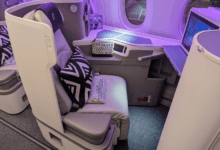Unlock Professional Success: Discover Top-notch Business Card Printing Near You
Welcome to our exclusive guide on finding the best business card printing services near you. In this digital age, where virtual connections dominate, there’s something undeniably powerful about exchanging tangible business cards. Whether you’re an entrepreneur, a freelancer, or a professional looking to make a lasting impression, having well-designed, high-quality business cards is paramount. But fret not, as we’ve curated a comprehensive list of top-notch printing services that will help you create stunning business cards that reflect your unique brand identity. So, let’s dive in and explore the wonders of business card printing near you!
The Importance of Business Cards in the Digital Age
In today’s fast-paced digital world, where virtual connections and online networking dominate, you might wonder if business cards still hold any significance. The answer is a resounding yes! Despite the prevalence of digital communication, business cards remain a powerful tool for making strong, memorable connections in the professional world.
Business cards act as tangible reminders of who you are and what you offer. They provide a physical representation of your brand identity and serve as a personal touchpoint that establishes credibility and professionalism. When you exchange business cards with someone, you create a memorable moment that transcends the digital realm.
Think about it: have you ever attended a networking event or a business meeting where you were bombarded with digital information? Email addresses, LinkedIn profiles, and phone numbers may get lost in the shuffle of a crowded inbox or a sea of connections. However, when you exchange business cards, you give someone a physical item that they can hold onto and refer back to at their convenience.
1. Making a Lasting Impression
One of the primary reasons why business cards are still relevant today is their ability to make a lasting impression. When you hand someone a well-designed, professionally printed business card, you show that you value the personal touch and take pride in your brand. This small gesture can leave a significant impact on potential clients, partners, or employers.
Additionally, business cards allow you to showcase your creativity and attention to detail. A well-crafted card speaks volumes about your professionalism, creativity, and commitment to excellence. By investing time and effort in designing and printing high-quality business cards, you demonstrate that you are serious about your work and dedicated to making a strong first impression.
Furthermore, business cards provide an opportunity for you to stand out from the competition. In a crowded marketplace, where countless individuals are vying for attention, a uniquely designed business card can make you more memorable. It becomes a conversation starter, a physical representation of your brand that sparks curiosity and leaves a lasting impression long after the initial interaction.
While digital connections are essential, there is something undeniably powerful about the exchange of physical business cards. They establish a connection that goes beyond the virtual realm and create a personal touchpoint that can leave a lasting impact on your professional relationships.
Choosing the Right Design for Your Business Cards
When it comes to business cards, design is everything. Your business card design serves as a visual representation of your brand identity, conveying your professionalism, creativity, and attention to detail. Here are some key considerations to keep in mind when choosing the right design for your business cards:
1. Reflect Your Brand Identity
Your business card design should align with your overall brand identity. Consider your brand’s colors, fonts, and visual elements, and incorporate them into your business card design. Consistency in design helps reinforce your brand image and makes your cards instantly recognizable.
For example, if your brand has a modern and minimalist aesthetic, opt for clean lines, simple typography, and a sleek design. On the other hand, if your brand has a more playful and vibrant personality, consider using bold colors, unique shapes, and eye-catching illustrations.
2. Keep it Simple and Readable
While it’s important to make your business cards visually appealing, it’s equally crucial to ensure that the design is simple and easy to read. Avoid cluttering the card with excessive information or intricate graphics that may distract from the essential details.
Choose a legible font size and style that is easy to read at a glance. Use whitespace strategically to create balance and allow important information to stand out. Remember, simplicity can often be more impactful than complexity.
3. Consider Card Orientation and Shape
Traditionally, business cards are rectangular and horizontally oriented. However, don’t be afraid to think outside the box and consider alternative orientations or shapes that align with your brand and help you stand out.
For instance, vertical business cards can create a unique and modern look, while square or rounded corners can add a touch of creativity. Just ensure that the card’s shape and size are practical and fit within standard cardholders and wallets.
4. Incorporate Visual Elements
Visual elements, such as your logo, images, or patterns, can enhance the visual appeal of your business cards. Use these elements strategically to reinforce your brand identity and create a cohesive design.
For example, you can feature your logo prominently on one side of the card, accompanied by a subtle pattern or texture on the background. This combination adds visual interest while maintaining a professional look.
Remember, the goal is to create a design that not only catches the recipient’s attention but also leaves a lasting impression. By carefully considering your brand identity, readability, orientation, and visual elements, you can create business cards that are visually stunning and effectively represent your brand.
Exploring Different Printing Techniques
When it comes to creating business cards that stand out, the printing technique you choose can make all the difference. There are several printing techniques available that can add a touch of sophistication and uniqueness to your business cards. Let’s explore some of these techniques:
1. Embossing
Embossing is a popular printing technique that adds a raised texture to specific parts of your business card. It creates a three-dimensional effect, making your design elements, such as logos or text, stand out. Embossing adds a tactile element to your cards, making them visually appealing and memorable.
2. Foil Stamping
Foil stamping involves the application of metallic foil onto your business cards, creating a shiny and reflective effect. This technique adds a touch of elegance and luxury to your design. You can choose from various foil colors, such as gold, silver, copper, or even holographic, to create a visually stunning impact.
3. Spot UV
Spot UV involves applying a glossy coating to specific areas of your business card, creating contrast and visual interest. This technique adds a subtle sheen and texture to your design, making certain elements stand out when light hits the card at certain angles. Spot UV is great for highlighting logos, text, or patterns and can create a modern and sophisticated look.
4. Letterpress
Letterpress is a traditional printing technique that involves pressing inked plates onto the cardstock, creating a debossed effect. It results in a textured, tactile feel and adds a vintage and artisanal touch to your business cards. Letterpress is often associated with elegance and high-quality craftsmanship.
5. Die-Cutting
Die-cutting allows you to create unique shapes and cutouts on your business cards. It adds an element of creativity and helps your cards stand out from the crowd. Whether it’s rounded corners, custom shapes, or intricate patterns, die-cutting offers endless possibilities to showcase your brand’s personality.
6. Thermography
Thermography is a printing technique that involves applying a special powder to wet ink and then heating it to create a raised, textured effect. This technique adds depth and dimension to your business cards, giving them a luxurious and professional look.
Each printing technique has its own unique appeal and can enhance the visual impact of your business cards. Depending on your brand’s aesthetics and the impression you want to create, you can choose the technique that best suits your design and budget. Incorporating these printing techniques into your business cards will undoubtedly make them stand out and leave a lasting impression on anyone who receives them.
Finding Local Business Card Printing Services
When it comes to printing business cards, working with a local printing service offers numerous advantages. Not only does it help support local businesses, but it also allows for more personalized service, faster turnaround times, and the opportunity for face-to-face consultations. Here’s how you can find reputable business card printing services near you:
1. Local Directories and Search Engines
Start your search by checking local directories and search engines. Look for keywords such as “business card printing near me” or “local printing services.” This will provide you with a list of printing companies in your area.
Take the time to visit their websites and browse through their portfolio, services, and customer reviews. Look for printing services that have experience in business card printing and have a positive reputation among their clients.
2. Online Printing Marketplaces
Online printing marketplaces can also be a valuable resource for finding local printing services. These platforms allow you to search for printing providers based on your location and specific printing requirements.
These marketplaces often provide detailed information about each printing company, including customer reviews, pricing, and turnaround times. By comparing different providers, you can make an informed decision based on your budget and printing needs.
3. Local Business Networking Groups
Tap into local business networking groups or associations in your area. Attend networking events or join online communities where entrepreneurs and professionals gather. These groups often share recommendations and insights about local printing services they have worked with in the past.
Engaging with fellow business owners or professionals can help you find printing services that have a track record of delivering high-quality business cards and exceptional customer service.
4. Ask for Recommendations
Don’t hesitate to reach out to your colleagues, friends, or family members who may have recently printed business cards. Ask for their recommendations and inquire about their experiences with local printing services.
Word-of-mouth recommendations are invaluable, as they provide firsthand insight into the quality, reliability, and customer service provided by a printing company.
5. Local Print Shops
Consider visiting local print shops in your area. These brick-and-mortar establishments often have a range of printing services available, including business card printing.
By visiting a local print shop, you can discuss your design and printing requirements directly with the staff. This allows for a more personalized experience, and you can ensure that your vision is accurately translated onto your business cards.
Remember to inquire about the printing company’s capabilities, pricing, turnaround times, and any additional services they may offer, such as design assistance or customization options.
By exploring these avenues, you can find reputable business card printing services near you. Local printing services offer the advantage of personalized attention, faster turnaround times, and the opportunity to support local businesses within your community.
Factors to Consider When Choosing a Printing Service
Not all printing services are created equal, and choosing the right one for your business cards is crucial. To ensure a seamless and satisfactory printing experience, consider the following factors when selecting a printing service:
1. Quality
The quality of the final product should be your top priority. Look for printing services that have a reputation for delivering high-quality business cards. Check their portfolio or request samples to assess the clarity, color accuracy, and overall print quality of their work. A reputable printing service will utilize advanced printing technology and high-quality materials to produce exceptional results.
2. Pricing
Compare the pricing structures of different printing services to find one that suits your budget. Request quotes or use online price calculators to determine the approximate cost of your business card order. Keep in mind that pricing may vary based on factors such as quantity, paper quality, finishes, and additional design services. Strike a balance between affordability and quality to ensure you get the best value for your investment.
3. Turnaround Time
Consider the turnaround time offered by the printing service. Depending on your needs, you may require a quick turnaround to meet deadlines or last-minute networking events. Inquire about their production time, shipping options, and any rush order services they may offer. A reliable printing service will provide clear timelines and ensure that your business cards are delivered promptly without compromising quality.
4. Customer Reviews and Testimonials
Research customer reviews and testimonials to gauge the satisfaction level of past clients. Check online review platforms, social media pages, or testimonials on the printing service’s website. Pay attention to feedback regarding customer service, print quality, communication, and overall experience. Positive reviews and recommendations from satisfied customers are indicators of a trustworthy and reliable printing service.
5. Customer Service
Excellent customer service is essential when working with a printing service. Consider their responsiveness, attentiveness, and willingness to address your queries or concerns. A reliable printing service should provide clear communication channels and be readily available to assist you throughout the printing process. Look for services that offer design assistance, provide proofs for approval, and have knowledgeable staff who can guide you through any technical aspects.
6. Additional Services
Take into account any additional services offered by the printing service. Some services may provide graphic design assistance, templates, or customization options to help you create unique and personalized business cards. Others may offer special finishes, such as spot UV or foil stamping, to enhance the visual appeal of your cards. Consider these extras to further elevate the design and impact of your business cards.
By carefully considering these factors, you can select a printing service that meets your specific requirements and ensures a smooth and satisfactory experience from start to finish. Remember, investing in a reputable printing service is an investment in the quality and professionalism of your business cards.
Design Tips for Memorable Business Cards
Creating a memorable business card involves thoughtful design choices that capture attention and leave a lasting impression. Here are some design tips to help you craft business cards that stand out:
1. Typography Matters
Choose fonts that reflect your brand’s personality and are easy to read. Select a font pairing that combines a bold or eye-catching font for your name or headline with a clean and legible font for other details. Experiment with font sizes, weights, and spacing to create a visually balanced and aesthetically pleasing layout.
2. Color Psychology
Colors evoke emotions and can communicate your brand’s message. Consider the psychology of colors when choosing your color palette. For example, blue can convey trust and professionalism, while yellow can symbolize creativity and energy. Use colors strategically to create a visually appealing and impactful design.
3. Unique Shapes and Die-Cuts
Think beyond the standard rectangular shape and consider unique shapes or die-cut designs for your business cards. Unconventional shapes or cutouts can make your cards visually striking and memorable. Just ensure that the shape aligns with your brand and does not compromise the card’s functionality.
4. Incorporate Visual Elements
Add visual elements that represent your brand identity and make your cards visually engaging. This can include your logo, icons, or relevant imagery. Visual elements help reinforce brand recognition and create a cohesive design that reflects your brand’s values and aesthetics.
5. Use White Space Wisely
White space, also known as negative space, is the empty space in your design. Utilize white space strategically to create a clean and uncluttered layout. It allows important elements to stand out, enhances readability, and gives your design a sophisticated and modern look.
6. Incorporate Texture or Unusual Finishes
Add texture or unusual finishes to your business cards to create a tactile experience. This can include embossing, debossing, or using specialty papers with unique textures. Texture adds a sensory element to your cards, making them more memorable and distinctive.
7. Consider Information Hierarchy
Organize the information on your business cards based on importance. Ensure that your name and title are prominent, followed by essential contact details. Consider using different font sizes, weights, or colors to create a clear hierarchy and guide the viewer’s attention to the most critical information.
8. Showcase Your Portfolio or Work
If you’re in a creative field, consider showcasing your portfolio or work on the back of your business card. This allows potential clients or employers to see your skills and expertise at a glance. Use this opportunity to highlight your best work and leave a lasting impression.
Remember, the goal is to create a visually appealing design that captures attention and represents your brand effectively. Experiment with these design tips and find a balance between creativity and professionalism that aligns with your brand’s image.
The Power of Paper: Choosing the Right Cardstock
When it comes to business cards, the choice of cardstock plays a significant role in the look, feel, and durability of your cards. Here are some factors to consider when selecting the right cardstock for your business cards:
1. Weight and Thickness
Cardstock weight is measured in grams per square meter (gsm) and determines the thickness and sturdiness of the paper. Consider the weight that best suits your needs, keeping in mind that heavier cardstock tends to feel more substantial and durable. Opt for a cardstock weight that is neither too flimsy nor too thick, striking a balance between durability and practicality.
2. Finish and Texture
Cardstock comes in different finishes and textures, each offering a unique look and feel. Matte cardstock has a smooth and non-reflective surface, giving your cards a sophisticated and elegant appearance. Glossy cardstock has a shiny and reflective finish, providing a polished and vibrant look. Textured cardstock, such as linen or felt, adds a tactile element and a touch of luxury to your cards. Consider the finish and texture that best complements your brand’s image and design aesthetic.
3. Color and Coating
While white cardstock is the most common choice, you can also opt for colored cardstock to add visual interest or align with your brand’s color palette. Colored cardstock can create a unique and memorable impression. Additionally, you may choose to add a coating, such as UV coating or matte varnish, to enhance the appearance and durability of your cards. Coatings can protect against scratches, smudges, and UV damage, ensuring your cards look pristine for longer.
4. Sustainability and Recycled Options
If environmental sustainability is important to your brand, consider using recycled or eco-friendly cardstock options. Recycled cardstock is made from post-consumer waste, reducing your carbon footprint. Look for cardstock that is FSC-certified (Forest Stewardship Council) or contains a high percentage of recycled content. Choosing sustainable options demonstrates your commitment to eco-conscious practices.
5. Printing Compatibility
Ensure that the cardstock you choose is compatible with the printing techniques you plan to use. Some cardstocks may work better with certain printing methods, such as letterpress or foil stamping, while others may be more suitable for digital printing. Consult with your printing service to determine the best cardstock options that will yield optimal printing results.
6. Budget Considerations
Lastly, consider your budget when selecting cardstock for your business cards. Premium or specialty cardstocks may come at a higher cost, while more standard options may be more budget-friendly. Strike a balance between quality, aesthetics, and affordability to ensure you get the best value for your investment.
Choosing the right cardstock for your business cards is essential in creating a memorable and professional impression. Consider factors such as weight, finish, color, sustainability, printing compatibility, and budget to find the cardstock that aligns with your brand identity and elevates the overall look and feel of your business cards.
Adding Creative Elements to Your Business Cards
Injecting creativity into your business cards can make them truly unforgettable. By incorporating unique and eye-catching elements, you can capture attention, leave a lasting impression, and showcase your brand’s creativity. Here are some creative elements to consider adding to your business cards:
1. Die-Cut Shapes
Give your business cards a distinct look by opting for die-cut shapes. Instead of the traditional rectangular shape, consider cutting your cards into custom shapes that align with your brand or industry. Whether it’s a rounded edge, a unique symbol, or a silhouette related to your business, die-cut shapes add visual interest and make your cards stand out from the crowd.
2. Unique Finishes
Enhance the visual appeal of your business cards with unique finishes. Consider options like spot UV coating, metallic foil, or textured finishes to add depth and sophistication. Spot UV coating can create glossy and raised areas on specific parts of your design, while metallic foil adds a luxurious and reflective touch. Textured finishes, such as embossing or letterpress, add a tactile element that leaves a lasting impression.
3. Interactive Features
Add an interactive element to your business cards to engage recipients and make them remember you. This can include incorporating QR codes that lead to your website or portfolio, augmented reality elements that come to life when viewed through a smartphone app, or even a scratch-off section revealing a special offer or discount. These interactive features create a memorable experience that sets you apart from the competition.
4. Folded or Multi-Purpose Cards
Get creative with the format of your business cards by opting for folded or multi-purpose designs. Folded cards provide additional space for information, such as a mini portfolio, a map, or a discount voucher. Multi-purpose cards can serve as a business card and a useful tool, such as a ruler, a bottle opener, or a USB drive. These unconventional formats make your business cards more functional and memorable.
5. Incorporate Unique Materials
Consider using unique materials to create a memorable tactile experience. Options like wood, metal, acrylic, or even recycled materials can add visual and textural interest to your business cards. Choose materials that align with your brand’s identity and values, making your cards not only visually appealing but also environmentally friendly or representative of your industry.
6. Creative Typography
Typography is a powerful design element that can evoke emotions and set the tone for your brand. Experiment with creative typography by using custom fonts, playful layouts, or typographic artistry. Consider incorporating hand-lettering, calligraphy, or unique font pairings to make your business cards visually striking and reflective of your brand’s personality.
By adding these creative elements to your business cards, you can create a memorable and visually captivating representation of your brand. Remember to strike a balance between creativity and professionalism, ensuring that the design elements align with your brand identity and effectively communicate your message.
Showcasing Your Brand with Premium Finishes
When it comes to business cards, premium finishes can elevate the overall look and feel, showcasing your brand’s excellence and attention to detail. These finishes add a touch of sophistication and luxury, making your business cards truly standout. Here are some premium finishes to consider:
1. Metallic Ink
Using metallic ink can instantly add a touch of elegance and shine to your business cards. Metallic ink contains reflective particles that create a metallic or shimmering effect when applied to your design. Whether you opt for gold, silver, copper, or any other metallic color, this finish adds a luxurious and eye-catching element to your cards.
2. Soft-Touch Coating
Soft-touch coating, also known as velvet or suede coating, adds a velvety smooth texture to your business cards. This finish not only feels luxurious to the touch but also provides a matte appearance that reduces glare and fingerprints. Soft-touch coating adds a tactile element that enhances the perceived value of your cards and leaves a lasting impression.
3. Foil Stamping
Foil stamping involves applying a metallic foil onto your business cards, creating a glossy and reflective effect. This technique can be used to highlight specific design elements, such as your logo or text, by adding a touch of metallic brilliance. Foil stamping comes in various colors, including gold, silver, rose gold, and holographic, allowing you to choose a finish that aligns with your brand’s aesthetic.
4. Spot UV Coating
Spot UV coating involves applying a glossy and raised coating to specific areas of your business cards. This finish adds a striking contrast and texture, making certain elements of your design stand out. Spot UV coating can be used to highlight logos, text, patterns, or any other design element you want to draw attention to. It creates a visually appealing and professional look that exudes quality.
5. Edge Painting
Edge painting is a technique that involves applying a thin strip of color to the edges of your business cards. This finish adds a pop of color that complements your design and creates a visually stunning effect when the cards are stacked. Edge painting allows for customization and uniqueness, making your cards look polished and distinctive.
6. Debossing
Debossing creates a sunken or pressed-in effect on your business cards, adding texture and depth. This technique can be used to create tactile impressions of your logo, text, or other design elements. Debossing adds a subtle elegance and sophistication, making your cards visually and physically appealing.
By incorporating these premium finishes into your business cards, you can elevate their overall appearance and showcase your brand’s commitment to excellence. These finishes add a touch of luxury, create visual interest, and leave a lasting impression on anyone who receives your cards.
Beyond Business Cards: Innovative Networking Tools
While business cards remain a staple in networking, there are also innovative tools available in the digital era that can enhance your networking efforts. These tools bridge the gap between traditional and digital networking methods, offering unique and interactive ways to connect with others. Here are some innovative networking tools to consider:
1. NFC-Enabled Cards
Near Field Communication (NFC) technology allows for seamless data transfer between devices in close proximity. NFC-enabled business cards have a small chip embedded in them that, when tapped against an NFC-enabled device, can instantly share your contact information, website, or even social media profiles. This technology simplifies the process of exchanging information and makes it easier for recipients to save your details digitally.
2. QR Codes
QR codes provide a quick and convenient way to share information. By including a QR code on your business card, you can direct recipients to a specific website, online portfolio, or social media profile. QR codes can be easily scanned using a smartphone camera or a QR code scanning app, allowing for instant access to your digital presence.
3. Augmented Reality (AR) Business Cards
Augmented Reality (AR) technology blends the physical and digital worlds. AR business cards use augmented reality apps to bring your card to life. When recipients scan your business card using an AR app, they can view interactive content, such as 3D animations, videos, or product demonstrations. AR business cards create a unique and memorable experience that sets you apart from traditional networking methods.
4. Video Business Cards
Video business cards provide a dynamic way to introduce yourself and showcase your skills. These cards include a small screen or embedded video module that plays a pre-recorded video when activated. Video business cards allow you to present your elevator pitch, showcase your portfolio, or provide a personalized message, capturing attention and leaving a lasting impression.
5. Digital Networking Apps
Digital networking apps are designed to streamline the networking process and facilitate connections. These apps allow professionals to create digital profiles, exchange contact information, and connect with others in their industry or field of interest. Digital networking apps provide a virtual platform for networking, allowing for efficient and targeted connections.
6. Interactive Online Portfolios
An interactive online portfolio can serve as a digital extension of your business card. Alongside your traditional business card, include a link or QR code that directs recipients to your online portfolio. Your portfolio can showcase your work, testimonials, and additional information that goes beyond what can be included on a physical business card. This allows you to make a more comprehensive and impactful impression.
By embracing these innovative networking tools, you can enhance your networking efforts and adapt to the digital era while still valuing the power of physical business cards. These tools provide unique and interactive ways to connect with others, leaving a lasting impression and making your networking efforts more effective.
In conclusion, business cards continue to hold immense value in the digital age, providing a tangible and personal touchpoint in a virtual world. By carefully considering factors such as design, printing techniques, cardstock choices, and creative elements, you can create business cards that truly stand out and leave a lasting impression. Whether it’s through unique finishes, innovative networking tools, or thoughtful design choices, your business cards can showcase your brand’s professionalism, creativity, and attention to detail.
Remember to choose a reputable printing service that delivers high-quality results and offers excellent customer service. Support local businesses whenever possible, and explore the various printing techniques and finishes available to add that extra touch of sophistication. Additionally, consider incorporating interactive elements, such as QR codes or augmented reality, to bridge the gap between traditional and digital networking methods.
Ultimately, your business cards should reflect your brand identity, make a memorable impact, and facilitate meaningful connections. By investing in well-designed and professionally printed business cards, you are investing in your professional success and leaving a lasting impression on potential clients, partners, and employers. So, go ahead and create business cards that truly represent your brand and unlock new opportunities!

I am a passionate and dynamic entrepreneur and the creative force behind “Bile Business,” a blog dedicated to exploring the ever-evolving world of business. With a keen eye for innovation and a relentless drive for success, John has established himself as a thought leader in the business realm.









